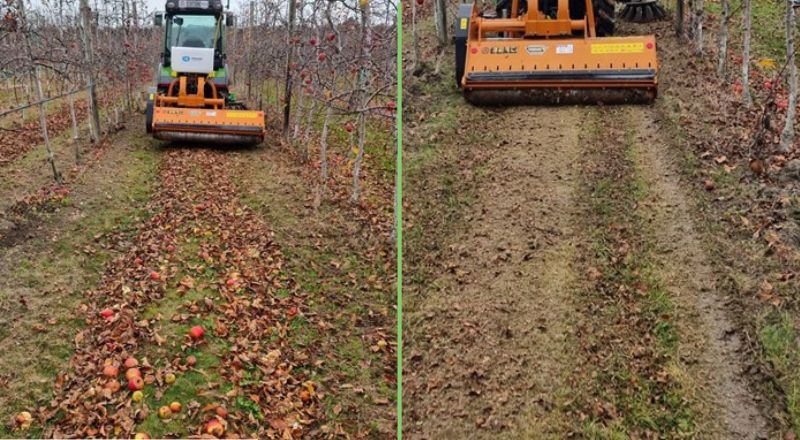Designed with a goal to determine the value of orchard floor sweeping, the case study orchards sought to remove fruitlets, fruit, leaf litter and prunings to break the lifecycles of a range of pathogens and reduce the inoculum load the following season.
Sweeping treatments began from the post-harvest period through to early spring.
Additional sanitation case studies this season investigated the integration of nitrogen in the mulching process to optimize the rate of decomposition and improve suppression of fungal diseases.
While the case study is not yet complete, early findings suggest that sanitation is having a significant impact on litter decomposition and ascospore potential within the orchard.
Purpose of Case Studies:
- Case study orchards are demonstration areas for best practice and allow researchers to showcase how emerging technologies and control options can be implemented and refined in an operational orchard environment.
- Key focus areas for this season have been two-fold
- Demonstrating how to optimize spray efficacy on modern growing systems.
- How to integrate new pest and disease detection, monitoring and control options in a commercial environment.
Below: A case study orchard before (left) and after (right) sanitation processes have been applied.



